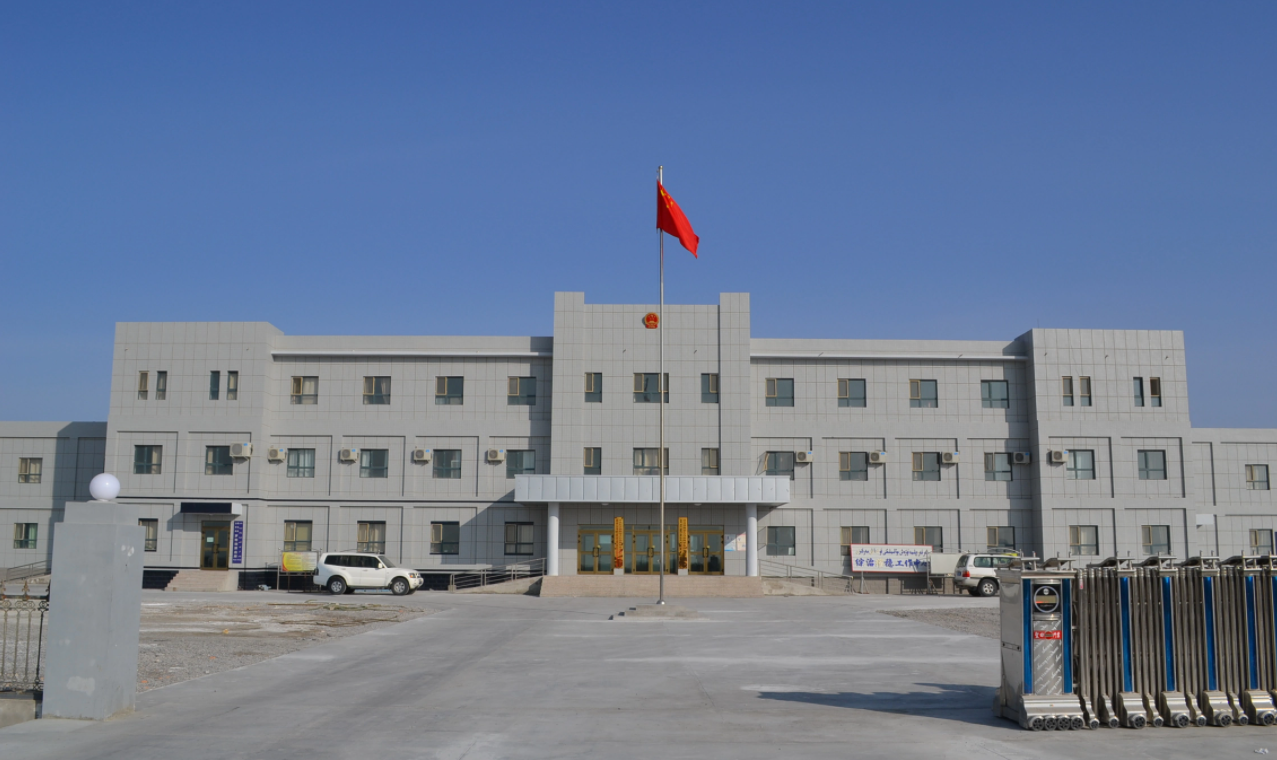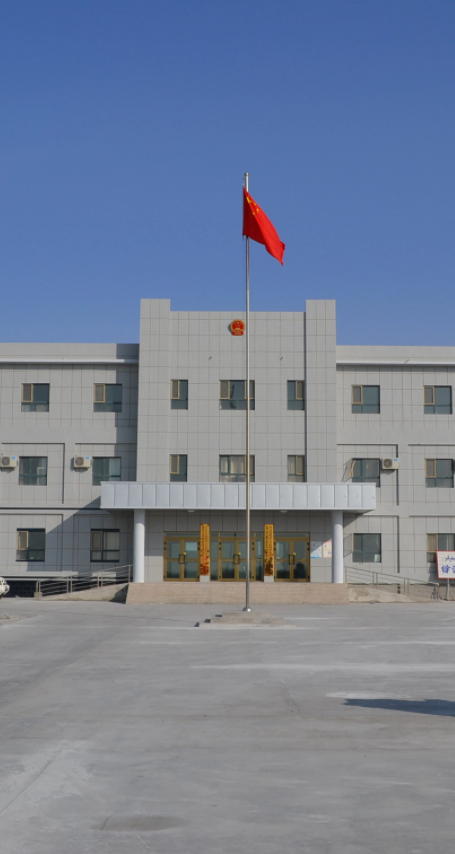Luobupo Town, Ruoqiang County, Bayingolin Mongolian Autonomous Prefecture, Xinjiang Uygur Autonomous Region
Lop Nur town is subordinate to Ruoqiang County, Bayingolin Mongolian Autonomous Prefecture, Xinjiang Uygur Autonomous Region. It is located in the Lop Nur area in the northeast of Ruoqiang county. It is connected with Gansu Province in the East, timulik Township in the south, tieganrik Township and Yuli County in the west, Shanshan county and Hami City in the north, with a total area of 51000 square kilometers.
A large potassium rich brine mine was discovered at the end of the 20th century. In 2000, the state began to invest and develop it, and Lop Nur town was officially set up in 2002. As of 2014, Lop Nur town has jurisdiction over 1 community and 4 administrative villages. As of 2017, there were 4358 permanent residents.
Lop Nur town's economy is dominated by industry. In 2018, Lop Nur town had 7 industrial enterprises, including 2 above designated size.
Luobupo Town Wiki:
| Chinese name | Lop Nur town |
| Foreign name | LuobupoTown、LopNorTown |
| area number | six hundred and fifty-two million eight hundred and twenty-four thousand one hundred and two |
| Administrative Region category | town |
| Region | Ruoqiang County, Bayingolin Autonomous Prefecture, Xinjiang Uygur Autonomous Region |
| geographical position | The northeast of Ruoqiang County |
| the measure of area | 51000km ² |
| Areas under jurisdiction | 1 Community |
| Government resident | Milan Village |
| Area Code | 0996 |
| zip code | eight hundred and forty-one thousand eight hundred and ninety-nine |
| climatic conditions | Continental arid climate |
| population size | 4300 (permanent population in 2017) |
| Famous scenic spot | Loulan ancient city, Milan ancient city, Haitou ancient city, Tuyin ruins, Lop Nur Yadan wonders, etc |
| train station | Luozhong railway station |
| License plate code | Xin · M |

Chinese PinYin : Xin Jiang Wei Wu Er Zi Zhi Qu Ba Yin Guo Leng Meng Gu Zi Zhi Zhou Ruo Qiang Xian Luo Bu Bo Zhen
In the 1970s, after Lop Nur dried up, it was regarded as a "life forbidden zone" by the world.
At the end of the 20th century, the staff of the Chinese Academy of Geological Sciences found a large potassium rich brine mine in Lop Nur, with a reserve of 200 million tons.
In September 2000, the state invested in the development of Lop Nur potassium salt. Lop Nur has also become the world's largest potassium sulfate production base, and the local population is increasing.
Lop Nur town was established on January 23, 2002.
On December 14, 2018, the people's Government of Xinjiang Uygur Autonomous Region agreed to transfer part of the area directly under the central government of Ruoqiang county to Lop Nur town and move the government residence of Lop Nur town to Milan village in the adjusted area.
In 2011, Lop Nur town had jurisdiction over one community of luok community and four administrative villages of Luozhong, Hongshijing, Bayi spring and Loulan.
In 2014, Lop Nur town governed one community and four administrative villages: luok community, Luozhong village, Hongshijing village, bayiquan village and Loulan village.
In 2019, Lop Nur town governs one community: luok community.
geographical position
Lop Nur town is located in the Lop Nur area in the northeast of Ruoqiang County, between 90 ° 00 ′~ 91 ° 45 ′ E and 39 ° 50 ′~ 41 ° 05 ′ n. It is connected with Gansu Province in the East, timulik Township in the south, tieganrik Township and Yuli County in the west, Shanshan County and Hami City in the north, with a total area of 51000 square kilometers.
topographic features
Lop Nur town is located at the edge of Taklimakan Desert and the east of Tarim Basin. It is a lacustrine sedimentary plain landform with flat terrain and an average altitude of 900m.
climate
Lop Nur town has a warm temperate continental climate, which is characterized by hot summer and cold winter, large temperature difference between day and night, strong evaporation and little annual precipitation; The annual average temperature is 14 ℃, and the average temperature in January is 1.2 ℃; The average temperature in July is 27.8 ℃; The annual average growth period is 80 days, and the annual average frost free period is 165 days, with a maximum of 205 days and a minimum of 125 days; The annual average sunshine hours are 2854 hours; Above 0 ℃ for 280 days; The average annual precipitation is 38.5mm, and the rainfall is concentrated from May to September every year, with the most in July.
natural resources
Lop Nur town is rich in mineral resources, including salt, potassium salt, magnesium salt, cesium salt, copper, nickel, gold and manganese, among which potassium salt, copper and nickel are the most abundant; Other natural resources include wild camels.
In 2011, the total population of Lop Nur town was 1296, all of which were floating population. Among the total population, there are 1218 males, accounting for 94%; 78 women, accounting for 6%; 13 people under the age of 18, accounting for 1%; 674 people aged 18-34, accounting for 52%; 609 people aged 35-60, accounting for 47%; Mainly Han nationality, up to 1218 people, accounting for 94%; There are three ethnic minorities, Uighur, Hui and Mongolia, with a total of 78 people, accounting for 6%; The population density is 0.025 people per square kilometer.
In 2014, Lop Nur town had a total population of 4200, mainly Han people, with only a few Uighur, Kazak and other ethnic groups.
In 2017, Lop Nur town had a permanent resident population of 4358.
Lop Nur town is an important potash industrial production base, and has initially formed an industrial system focusing on the production of potash and potassium sulfate.
In 2011, the total industrial output value of Lop Nur town reached 3.94 billion yuan, an increase of 99% over 2010. In 2011, Lop Nur town had 16 industrial enterprises with 1200 employees, realizing an industrial added value of 2.65 billion yuan, an increase of 95% over 2010.
In 2013, Lop Nur town produced 1.39 million tons of potassium sulfate, completed a total industrial output value of 4 billion yuan, realized an industrial added value of 2.7 billion yuan and paid more than 1 billion yuan in taxes. From January to February 2014, 350000 tons of potassium sulfate and 20000 tons of potassium magnesium sulfate fertilizer were produced, realizing a total industrial output value of 826 million yuan. In 2013, Lop Nur commercial city was put into operation. From January to October 2013, the tax was 807 million yuan and the investment in fixed assets was 1 billion yuan.
In 2018, Lop Nur town had 7 industrial enterprises, including 2 above designated size.
Cultural and sports undertakings
At the end of 2011, there was a cultural station in Lop Nur Town, with a construction area of 270 square meters; One public library, with a construction area of 50 square meters and a collection of more than 3000 books.
medical and health work
At the end of 2011, there was a health center in Lop Nur Town, with 9 professional health personnel, including 1 licensed doctor, 2 doctors, 5 registered nurses and 1 examiner; There are 6 hospital beds and the total value of fixed assets is 240000 yuan. In 2011, medical institutions in Lop Nur town (above the outpatient department) completed 3352 person times of diagnosis and treatment.
social security
At the end of 2011, there was a health center in Lop Nur Town, with 9 professional health personnel, including 1 licensed doctor, 2 doctors, 5 registered nurses and 1 examiner; There are 6 hospital beds and the total value of fixed assets is 240000 yuan. In 2011, medical institutions in Lop Nur town (above the outpatient department) completed 3352 person times of diagnosis and treatment.
Lop Nur town has 235 provincial highway leading to Hami. The harrow railway from Hami to Lop Nur was completed and opened to traffic on November 29, 2012, and Luozhong station was set in Luozhong, Lop Nur town. In 2014, the construction of Luozhong station and freight transportation of harrow railway has passed the acceptance and is qualified for freight transportation.
Origin of place names
Lop Nur town is named for its location in Lop Nur area.
cultural relics and historic sites
The cultural relics and historic sites in Lop Nur include Tuyin site, Milan ancient city site, Haitou ancient city site, Loulan ancient city site, Zhubin River ancient city site, etc.
Ruins of Loulan ancient city
Loulan ancient city site is located in the northwest corner of Lop Nur in Ruoqiang County, Bayingolin Mongolian Autonomous Prefecture, Xinjiang Uygur Autonomous Region. It is an ancient city site in the Han Jin period (2nd-4th century BC). Loulan pagoda and "three rooms" have become the symbols of Loulan site. The ancient city site includes 108000 square meters of urban area, Ma and MB cemeteries in the eastern suburbs, the sites of surrounding Temple residents and Loulan noble tombs.
On January 13, 1988, the ruins of Loulan ancient city were announced as the third batch of national key cultural relics protection units by the State Council of the people's Republic of China.
Zhubin River ancient city site
The ancient city site of Zhubin river is located 6.3 kilometers west of the Xiaohe cemetery in Lop Nur. It was newly discovered from November to December 2008 and was named Han Jin No. 4 site. The building scale is second only to Loulan site in Lop Nur area. Through analysis, the researchers found that the age of the ancient city wall was about 440 ~ 500 A.D. and formed in the Northern Wei Dynasty.

Luobupo Town
-
Daxinggou Forestry Bureau, Wangqing County, Yanbian Korean Autonomous Prefecture, Jilin Province
Daxinggou Forestry Bureau, Wangqing County, Yanbian Korean Autonomous Prefecture, Jilin Province. Ji Lin Sheng Yan Bian Chao Xian Zu Zi Zhi Zhou Wang Qing Xian Da Xing Gou Lin Ye Ju
Views: 8 Time 2021-03-08 -
Shounan street, Yinzhou District, Ningbo City, Zhejiang Province
Shounan street, Yinzhou District, Ningbo City, Zhejiang Province. Zhe Jiang Sheng Ning Bo Shi Yin Zhou Qu Shou Nan Jie Dao
Views: 37 Time 2021-03-08 -
Sihe street, Sishui County, Jining City, Shandong Province
Sihe street, Sishui County, Jining City, Shandong Province. Shan Dong Sheng Ji Ning Shi Si Shui Xian Si He Jie Dao
Views: 7 Time 2021-03-08 -
Binhe New District Street, Shenmu City, Yulin City, Shaanxi Province
Binhe New District Street, Shenmu City, Yulin City, Shaanxi Province. Shan Xi Sheng Yu Lin Shi Shen Mu Shi Bin He Xin Qu Jie Dao
Views: 7 Time 2021-03-08 -
Mubo Town, Huan County, Qingyang City, Gansu Province
Mubo Town, Huan County, Qingyang City, Gansu Province. Gan Su Sheng Qing Yang Shi Huan Xian Mu Bo Zhen
Views: 9 Time 2021-03-08 -
Guan Xiang, Yiyang County, Henan Province
Guan Xiang, Yiyang County, Henan Province. He Nan Sheng Yi Yang Xian Cheng Guan Xiang
Views: 8 Time 2021-03-08 -
Xinggong street, Laocheng District, Huludao City, Liaoning Province
Xinggong street, Laocheng District, Huludao City, Liaoning Province. Liao Ning Sheng Hu Lu Dao Shi Lao Cheng Qu Xia Xia Jie Dao Xing Gong Jie Dao
Views: 6 Time 2021-03-08 -
Aimin Township under the jurisdiction of Sichuan Province
Aimin Township under the jurisdiction of Sichuan Province. Si Chuan Sheng Hui Li Xian Xia Xia Xiang Yi Che Xiao Ai Min Xiang
Views: 9 Time 2021-03-08
